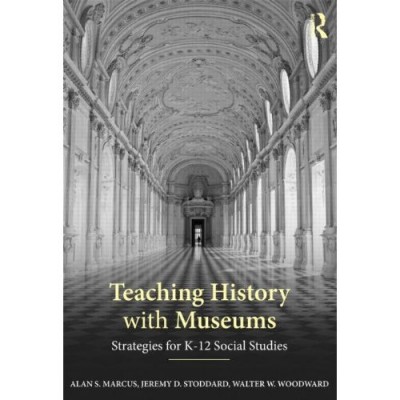 Museums provide students with opportunities and resources not available in the classroom. Through the physical participation of seeing, feeling, touching and overall experiencing the past, field trips to these sites and their corresponding lesson plans are crucial for successful learning in youth.
Museums provide students with opportunities and resources not available in the classroom. Through the physical participation of seeing, feeling, touching and overall experiencing the past, field trips to these sites and their corresponding lesson plans are crucial for successful learning in youth.
UConn’s Alan Marcus, Ph.D., associate professor of curriculum and instruction in the Neag School of Education, and Walter Woodward, Ph.D., associate professor of history and Connecticut state historian, believe museums promote a sophisticated understanding of social studies and facilitate the development of critical thinking habits and literacy skills not easily replicated in the classroom.
Dr. Marcus, Dr. Woodward and co-author Jeremy D. Stoddard, a Spears Distinguished Associate Professor of Education at the College of William and Mary, integrated their history orientations and education perspectives in the new book, Teaching History with Museums.
It is the authors’ hope that their text will encourage teachers to design more effective museum visits with a fueling of collaboration between teachers and museum educators.
“The museum education experience is very different from teaching history in a classroom,” says Dr. Woodward. “Helping teachers and museum educators understand the differences between the two, so they can collaborate to give students a richer and more meaningful understanding of how history affects their lives, seemed awfully important.”
Dr. Marcus and Dr. Woodward believe that by bridging this gap and providing both groups of educators with the proper skills, students will become more analytical consumers and improved citizens in a democracy.
“[We] wrote the book to support teachers, pre-service teachers and museum professionals, and to help develop effective and engaging activities for student visits to museums and/or using museum resources,” says Dr. Marcus. “The book provides a theoretical framework for using museums to develop students’ historical understanding, as well as the importance of using museums more broadly. It also presents a series of case studies of teachers taking students to museums.”
The text introduces the importance, power and potential for historical knowledge of different types of museums. Each serve various purposes in learning. Chapters in the book are devoted to artifact, display and living history museums, as well as to historic homes, monuments, memorials and forts.
The book is grounded in well-established theory and research in history education, providing practical strategies for teachers and museum professionals alike.
“The activities presented are representative of key issues with each type of museum, so there are core concepts that can be applied to other living-history museums or other historic forts,” says Dr. Marcus.
Teaching History with Museums has not only lead to a collaboration between the two UConn departments, but to a partnership with one of the book’s case studies, the Mark Twain House and Museum.
The partnership includes pre-service history teachers interning at the Twain House, a Neag Social Studies Alumni Event in April and an upcoming free book talk, “What Role Can Museums Play in Educational Reforms in Connecticut.”
Nine students are currently interning at the Twain House, where they are being trained as exhibit guides. The experience prepares these pre-service teachers to develop curriculums and outreach for schools, as well as to create pre-visit activities for museum visitors.
In addition, Dr. Marcus is working on the development of a research study with a professor at the University of Nottingham in England to look at how students learn from museums, particularly those related to World War II and the Holocaust. The affiliation will entail collaborative work between pre-service history teachers at both universities.
Dr. Marcus hopes this work will eventually expand to faculty in England, Japan and Germany to analyze how students learn about World War II from museums in these locations, especially given the potential for different perspectives.
Drs. Marcus and Woodward are also now in discussions with the Connecticut Humanities Council about hosting a workshop for teachers and museum educators. This summer, they hope to have a book talk in Washington, D.C., in conjunction with the Smithsonian Museum. Both professors will be co-teaching a course on museum education in the coming academic year.
Dr. Marcus’ primary areas of scholarship focus on the use of film and museums to teach history. He has written numerous articles and books, including Teaching History with Film: Strategies for Secondary Social Studies and Celluloid Blackboard: Teaching History with Film. In addition, Dr. Marcus teaches a course called “Teaching History with Films and Museums,” which includes a two-week trip to Europe.
The “What Role Can Museums Play in Educational Reforms in Connecticut” book talk at the Mark Twain House and Museum will be held from 6 to 8:30 p.m. on March 27. Admission is free and includes a formal presentation, question and answer period, book signing, refreshments and a sneak preview of the “Race, Rage & Redemption” exhibition.
Attendees will also receive two free Mark Twain House tour passes. Reservations can be requested at (860) 280-3146 or craig.hotchkiss@marktwainhouse.org.
 Facebook
Facebook
 Twitter
Twitter
 LinkedIn
LinkedIn
